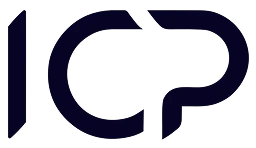Work organisation – 5 effective tips for every enterprise
Good work organization is essential for any project manager.

Tell our team about your needs and we will customize the tool as part of your chosen package!
Good work organization is essential for any project manager. Without it, projects can quickly become disorganized and chaotic, leading to costly delays and mistakes. One of the most important aspects of work organization is developing a clear project plan. This plan should lay out all of the tasks that need to be completed, as well as the timeline for each task. By having a clear project plan, project managers can ensure that everyone involved in the project knows what needs to be done and when it needs to be done. Additionally, good work organization requires maintaining clear communication channels. This means keeping all project stakeholders up-to-date on progress, changes, and issues. By maintaining open communication, project managers can avoid surprises and ensure that everyone is working towards the same goal.
Work organization and time tracking
If you're looking to boost your work organization, time tracking can be a helpful tool. Knowing how you're spending your time can help you identify areas where you may be able to be more efficient. For example, if you see that you're spending a lot of time on email, you might decide to schedule some time each day to batch your email responses. Alternatively, if you notice that you're constantly getting interrupted by colleagues, you might try to find ways to create some space for yourself, such as working from home one day a week. By recording track of your time, you can begin to make small changes that can have a big impact on your work organization.Work organization is a very important process both in private and professional life. Proper work organization allows us to plan everything, we know what we have to do, we have specified the ways to achieve that, and we are more productive. Therefore, every enterprise and management needs to take care of work organization in the business so that the whole enterprise functions better. It's no simple process. That said, in this article, we offer you a few key steps to take for your enterprise to level up. Which one will you put into practice?If we want to improve work organization in our enterprise, we have to assume quite a wide perspective. There is usually no one simple and effective method in such contexts. Numerous processes have to engage for the desired effects of our actions to show. It goes without doubt, though, that an organized enterprise is a more productive enterprise. We don't have to explain what this results in at the end.
Take care of a natural work environment for your team – get special tools that will organize teamwork and guarantee effective information circulation.
This is a process we have to start with. There's no other way. Each of your employees, and your entire team needs a natural work environment. Of course, the environment may consist of a desk, a computer, a telephone, and all accessories necessary for daily work. This is a foundation that – let's be honest – is provided by nearly every enterprise. We, however, would like to look at the topic from a different angle. It's about the place where an employee can find the tasks, projects, and the entire team. If we work on tasks and projects in teams, we often have to contact an employee or exchange information. And from a different perspective – how often do you work on files and documents? Agreements, procedures, regulations, graphic files, graphic change suggestions – they all can happen in one place.It's often the case that an enterprise does not have a tool or a shared platform where the team could put all of their duties. This is a very serious mistake that affects work organization. By ensuring this type of environment, we allow every employee to have access to their tasks and the projects run in our enterprise. If need be, they can download the necessary files from a special base or leave a comment to convey information. All this is in one shared tool. The Internet holds numerous productivity and works organization studies and most of them point to an appropriate tool that is vastly responsible for the enhancement of workflow.
You are certainly thinking now about where to find such a tool and how to implement it in your enterprise. It isn't a difficult task, and, of course, we have a proposal for you. One of the programs that will robustly enhance work organization is the IC Project, a tool that is used by a lot of enterprises in various industries. It features a natural environment for your team – you manage projects, delegate tasks, and improve communication and the circulation of files and documents. This is a tool that is very intuitive in daily use, thanks to which your team will simply be willing to work on such a solution. Deployment? You don't have to worry about anything: the simplicity of the tool will let you deploy it independently or with the full support of the IC Project team. This is a very fast and streamlined process, which will surely let you have better productivity in your team, and so, better organization.
Divide your work into special focus blocks—one or two breaks at work? This is a myth that you have to debunk in your enterprise quickly.
There is a myth very often present in Polish enterprises: that we have one, maybe two breaks from work during the day. Of course, if we want to comply with the provisions of the Labour Code, we should do so. However, if we want to take care of our own and proper rules in our enterprise, there's no place for such principles from the Labour Code. This kills productivity and, in turn, work organization. Studies show that 90 minutes is the maximum focus time for every individual. So if we have just two breaks daily in our enterprise, it won't make any sense because our employees will not be able to work beyond their capabilities anyway.
Dividing work into special blocks could be a useful solution. So if 90 minutes is the maximum time of focus, let's use it in our enterprise. If you allow your team breaks every hour and a half of work, everyone will refresh their minds and be more focused. Doing the entire daily work in one go does not make any sense, and there is nothing better for your mind than a break. Talking, drinking coffee or tea, going out – all this makes your mind come back to productive functioning after an intensive period of work. Is it, therefore, worth devoting 10 minutes to an additional break to be more focused and productive?
Let's look at this from a different perspective, from the organizational perspective. If we could work out a system of 90-minute focus blocks alternating with 15-minute breaks in your enterprise, it should have an immensely positive effect on work organization. No one interrupts each other, and everyone performs their duties. And when the time comes, everyone goes for a break. Cause it's much more difficult to implement it in a bigger team, but such conditions will affect work organization very much. This is doubtless a great solution, which you can implement and use right now.
Theme-based work division – focus without moving between different duties.
This is a very important aspect of every enterprise and team. If you manage an entire enterprise, it might be difficult to enforce, but the scrupulous conveyance of such rules to your employees or managers will bring good results. Theme-based work division – as the name implies – refers to the proper adaptation of the theme of duties to the given day or the given period of work. A great solution here would be a top-down division of work into different days of the week – you do one topic on Monday and another one on Tuesday, and you leave development-related topics for Wednesday. Of course, it's rarely the case that everything works perfectly. That said, you can organize work by themes as much as you can to achieve better organization and productivity.
You are perfectly aware that constantly changing task themes can effectively shake you out of your groove. You simply enter the flow state if you become inspired by the given topic. The task is done and then, suddenly, you are thrown into an entirely different set of activities – you ponder and analyze, and you find yourself not moving anywhere after several dozen minutes. This is what we want to avoid. Proper thematic division of your work will make you and your team better organized. If you can implement this into your enterprise, you will learn the huge benefits of this methodology.
Get to know how much time your professional duties take—with this knowledge, your work organization will climb a level higher.
Working without detailed data, you don't know what's going on. If you don't know how much time you spend on your duties, you work merely on a hunch. As a result, it's difficult to organize your work. This translates into the individual work of every employee, but particularly of the individual managing the enterprise. You very frequently make appraisals for clients based on the time required to complete the work. This is where we get to the crux. It's worth tracking the actual time devoted to the given type of duties; using this measurement, you can plan your entire day or an entire project, erring slightly due to variables. If you lack data, you know virtually nothing, and all your duties, and so appraisals, fail to meet the reality.
Here's an example: you know that your employee is to prepare a proposal and appraisal, create a project schedule, and delegate a team to complete the tasks. Right now, you have no idea how much time it can take. You can say it roughly, but you won't be sure. Until you know how much time is required, If an employee tracks the actual time required to do the given task once, twice, or thrice, they will know how to plan their day and you will know how to plan work for your team. This is a critical aspect of enterprise work organization: awareness of time spent. Without that data, our vision is obscured by this fog: we strive to get better financial results, but in reality, we lack the basic data and business indicators.
If you are wondering how to do all this effectively, special tools come to the rescue. In the first step, we discussed IC Project as a tool that provides your company and team with a complete work environment, complete with projects, tasks, communication, and file and document circulation. Let's follow that example. In the IC Project, you can also track the time devoted to the tasks done in it; everything will be interconnected and comprehensive. This is what we strive for in business: better organization of your work. This is a step you need to take care of.
Set goals—use the SMART method
For proper work organization, an enterprise needs a clear and transparent goal-setting model. We are well aware that if we have specific goal parameters and a deadline, we get more productive. If, on the other hand, we lack some parameters, execution extends in time. We want to avoid that. In this case, the goal-setting model will be key for proper work organization. For setting goals, it's worth using the SMART model – this is quite a trite, yet effective, the concept for goal setting. The SMART acronym consists of five parts that define how to set goals. What will be essential in this case?
- Specific – its understanding should not be problematic; the formulation should be unambiguous and leave no room for loose interpretation, particularly if we're talking teams and business.
- Measurable: formulated in such a way that the degree of goal achievement could be expressed in numbers, or at least allow clear 'checkability' of progress. If we're planning something, let's see if we've already achieved that.
- Achievable - an overly ambitious goal undermines faith in its achievement and, as a result, motivation to pursue it. This is a very important element of planning goals for the next year – we need to specify feasible goals, not goals the achievement of which is impossible. The more light we see at the end of the tunnel, the more willing we are to go towards it. Let's set goals gradually; over time, we will surely have the final goal within our grasp.
- Relevant – a goal should be an important step forward and it has to be valuable to the goal-achiever. This is an aspect that will usually bring about growth for our business and our entire team.
- Time-bound: a goal should have a specific deadline. If we rely on New Year's resolutions, the perfect time horizon will be the entire year, but there's nothing wrong with dividing the goals into smaller steps.
The SMART method appears in numerous scientific studies or general business articles. Frankly speaking, though, this is a perfect expression of how goals should be set. Quite a lot of experts refer to the SMART method as it is effective, plain, and simple. We also rely on it daily, and it works. Analyzing all of the above conditions, it's hard to avoid any of them as our goals will simply collapse and we will end up having no results. If you implement the SMART method in setting goals in your enterprise, it will directly translate into an effective work organization.
Also read

How to create an effective project plan?
A project plan is a key element of every successful project. Without a proper plan, projects can become chaotic and difficult to manage.
Try IC Project in your company Our team is ready to help!

Create a free account and test with no obligation



